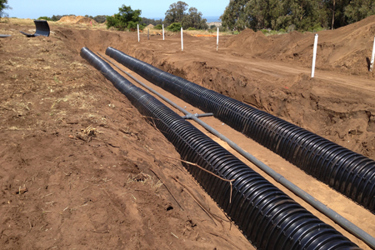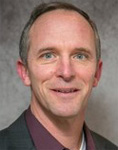Managed Aquifer Recharge Key To Water Reclamation
By Dennis F. Hallahan

With the great need to get water back into circulation to satisfy high demand, managed aquifer recharge (MAR) via decentralized wastewater treatment is proving to be an effective solution.
Water is one of our most precious and important resources to sustain life. In some areas of the world, the dwindling supply is becoming so apparent that federal, state, and local municipalities are seeking unique solutions to ensure residents have access to clean water.
The American West is a good example, where high demand for water from the population and agriculture combined with years of drought have stressed water supplies. The Colorado River serves more than 40 million people in seven U.S. states plus two states in Mexico, but given the demand and ongoing drought conditions, this situation has resulted in an increasing focus upon groundwater. In California, wells are drying up in record numbers, leading to an unprecedented surge in new deep well drilling permits. The significant drop in groundwater elevations has threatened land subsidence and resulted in saltwater intrusion.
While the American West is in the spotlight, water scarcity has also hit the wetter regions of the U.S. as the Eastern states also face many water supply and quality problems. Water utility managers have stated, “Cheap water is gone.”
There is a variety of ways to reclaim or reuse water to sustain supply. Solutions to reclaim water include utilizing recycled wastewater through purple pipes, reuse for nonpotable use, desalination, indirect potable reuse, sewer mining, or direct potable reuse. These methods can come with significant costs and often are unpopular with the public. While there’s no clear-cut solution that makes sense for water reclamation in every area of need, one of the methods growing in popularity is managed aquifer recharge as an indirect potable reuse solution.
What Is Managed Aquifer Recharge?
Managed aquifer recharge (MAR) is intentionally recharging aquifers for a future recovery and/or other benefits. There are many methods to provide MAR, including but not limited to aquifer storage, rapid infiltration basins, subsurface discharge systems, and deep well injection. Existing water supplies such as wastewater discharges or even rivers can be identified as sources to recharge aquifers. During periods of high river flows from snow melt, portions of the flow can be diverted and redirected to provide MAR. These sources of water that would otherwise drain out to the sea and be lost can be reused, and become invaluable to sustaining humans, wildlife, flora, and crop production. The MAR approach is gaining popularity in water-distressed communities and coastal areas where saltwater intrusion is a threat.
MAR Accomplished Through Decentralized Wastewater Treatment
The ability to recharge groundwater and replenish aquifers is a noted environmental benefit of decentralized wastewater treatment systems according to the U.S. EPA, making decentralized wastewater treatment systems one of the most effective MAR methods.
Decentralized wastewater treatment systems locally treat and disperse water, completing the water cycle in a small footprint with very little energy. Centralized wastewater treatment systems require massive investments in infrastructure.
In a typical decentralized wastewater treatment system, wastewater exits the home to the septic tank, where primary treatment occurs before discharge into a drainfield/leachfield/soakaway. Further treatment occurs within the soil until it returns to the groundwater, thereby recharging the local aquifer and achieving MAR.
In the centralized scenario, water is extracted from a source, treated to potable standards, then pumped via a pipe distribution network to its use destination. Once this water is used by a facility or homeowner, it is classified as wastewater and ultimately discharged, following centralized treatment, to a river or ocean. In the centralized approach, the disposal of the treated wastewater commonly occurs in local waterways, where it mixes with the existing water flows and is never captured for reuse.
How Much Water Is Recycled Through Decentralized Wastewater Treatment Systems?
Approximately 25% of the population in the U.S. relies on an individual onsite wastewater treatment system to treat used household water. Based on design standards, that estimates out to 18,000 gallons per person per year. Multiply that by the current U.S. population of 83 million people who are served by onsite wastewater treatment, and it is roughly 1.5 trillion gallons per year of water passively recycled through onsite wastewater treatment systems. Of note is that this flow rate only includes single-family systems and there are commercial facilities served. The extensive advancements in decentralized technology and design have enhanced the capability of decentralized wastewater treatment systems to treat large volumes of water for commercial facilities or cluster systems and still discharge to the subsurface. Today, there are decentralized MAR systems that have discharges in excess of 1 MGD.

Chamber beds installed to receive highly treated waste that will infiltrate and resupply the local aquifer
Examples Of Wastewater Treatment And MAR
It’s possible to take 1-MGD (3,785 cubic meters per day) treatment systems and successfully implement a recharge system when proper site conditions exist. Good, percolating soils and a dedicated land area are necessary for the recharge fields. Here are a few examples.
Los Osos, CA
The coastal community of Los Osos, CA, needed to address wastewater issues created by outdated systems and a history of nitrogen issues and saltwater intrusion. Exacerbating the challenge, the small lots within the community were not large enough to construct code-compliant single-family septic systems. In 2013, a community wastewater treatment system was designed and installed that would treat a design flow of 1.6 MGD (6,060 m3/d) and recharge the local aquifer. From the community wastewater treatment plant (WWTP), the treated effluent is pumped to a large chamber dispersal field that was installed along a hillside with ideal soils to facilitate aquifer recharge. With this solution, the town-owned property was converted to open-space walking trails and preserved for the community; therefore, the land was still functional while providing active recharge to the local aquifer.

Decentralized systems naturally recharge local aquifers, and these infiltration systems can be sized to accommodate much larger flows.
Gold Beach, OR
The town of Gold Beach, OR, had an existing centralized wastewater treatment system that was experiencing infiltration and inflow (I&I) problems. This resulted in the wastewater plant overflowing, carrying over solids, and then plugging and overflowing of the existing recharge system. The town implemented an I&I repair program and replaced and expanded the recharge fields. The design flow of the existing WWTP was 2 MGD (7,570 m3/d) and the recharge system was expanded from nine beds to 21 with three separate zones, each with seven beds. Each zone is served by its own pump, which allows for O&M flexibility and redundancy. The chamber beds were installed in the coastal plain area between the treatment plant and the ocean along the sides of a small airport. There were even design considerations in place to address the strength of the system if an airplane ran off the runway and over one of the beds. The MAR system will provide a much-needed barrier to saltwater intrusion.
Gillette Stadium – Foxborough, MA
When the new Gillette Stadium was constructed in 2000, the wastewater treatment system was required to be upgraded according to current state codes. A WWTP was designed for 250,000 GPD (945 m3/d) following a 680,000-gallon (2,575 m3) flow equalization tank to accommodate the 1 MGD (3,785 m3/d) design flow from the stadium during events. The membrane bioreactor (MBR) treats the wastewater to a level acceptable for reuse for toilet flushing. The wastewater is then returned to the stadium for reuse when needed or discharged to the subsurface disposal chamber beds installed below the parking lots surrounding the stadium for groundwater recharge.
Conclusion
According to the World Economic Forum, water scarcity is one of the greatest challenges of our time, and it will take many approaches to solve the supply and demand needs of future generations. Ongoing drought, high water usage from growing agricultural needs, and population increases will continue to stress the aquifer and groundwater supply. Effective MAR approaches and water reuse will help to combat this growing challenge. Ultimately, water conservation awareness and implementation by all water users are also needed to make a lasting positive impact.
About The Author
 Dennis F. Hallahan, PE, is the technical director of Infiltrator Water Technologies. Dennis has over 30 years of experience with the design and construction of onsite wastewater treatment systems. He has written several articles for onsite industry magazines and has given numerous presentations nationally on the science and fundamentals of onsite wastewater treatment systems. Dennis also oversees a department that is responsible for product research and testing for universities and private consultants.
Dennis F. Hallahan, PE, is the technical director of Infiltrator Water Technologies. Dennis has over 30 years of experience with the design and construction of onsite wastewater treatment systems. He has written several articles for onsite industry magazines and has given numerous presentations nationally on the science and fundamentals of onsite wastewater treatment systems. Dennis also oversees a department that is responsible for product research and testing for universities and private consultants.
